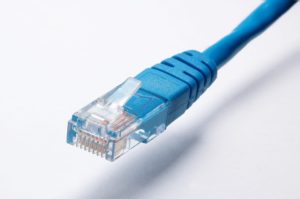How to connect analogue CCTV cameras to a CAT5 cable
Are you planning to wire your CCTV cameras with CAT5 cable? Have you been recommended to use CAT5 cable instead of coaxial cable by an engineer? When using a CAT5 cable for surveillance cameras, Before you make your decision, keep the following points in mind.

Twisted cables and CCTV applications
As the name suggests, twisted cables comprise of two cables twisted together. The category cables come with four twisted pairs. Each pair is twisted together, however, the number of twists per metre varies. The more twists you have, the more it is suitable for video transmission.
Use of a CAT5 cable for CCTV systems has a number of advantages

-
In general, Ethernet cables referred as CAT 5. There are several types of Ethernet cable. For the benefit of our readers, we’ll refer to them as Ethernet cable from now on. In a later post, we will look at the differences between these cable.
Long-distance
A CCTV application with a long cable run, Ethernet cable has a number of distinct advantages. Unlike to coax cable, Ethernet cable allows for long-distance video transmission. Coax cable has a maximum distance of 100 metres, while Ethernet cable has a maximum of 300 metres run for the colour signal.
EMI (Electromagnetic interference)
As CAT 5 cables use twisted pairs, EMI protection is possible for your signal (Electromagnetic interference).
Flexibility
Another benefit of CAT5 cables in CCTV systems is their flexibility.
Multi-purpose
Ethernet cables have multiple cores, which can be used to power, transmit video, and carry data all with the same wire. Wiring a CVBS PTZ camera, you can run the power, video transmission, and data communication with a single cable.
Use of an Ethernet cable for CCTV applications has some drawbacks
- Shielded and unshielded Ethernet cable: There are various types of category cable, and even within CAT5, there are various variants. The best type of cable to use in a CCTV application is a shielded cable.
- Transmitters and receivers: Additional costs such as active baluns or video amplifiers should be factored into your budget.
- Outdoor rated cable: Because most ethernet cables are not as well protected as coaxial cables, you may need to use trunking or conduit to protect the cable.
- CCTV Baluns: When connecting the wire with baluns, you may need to use ferrules with an Ethernet copper core.
- Higher-definition analogue cameras: In recent years, the CCTV market has seen a considerable shift from CVBS to HD resolution. High definition analogue cameras such as AHD, TVI, and CVI can give up to full 1080p resolution for 500 metres using a standard coaxial cable. Transmitters, receivers, ferrules, baluns aren’t required.
To summarise, I feel it is best to evaluate all of your project requirements before selecting a cable type.
If you enjoyed this post and want to learn more, sign up for our newsletters and follow us on social media. Don’t miss out on our free e-book; it’s only available for a short time.
